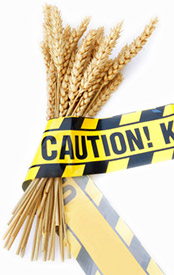Gluten-Free Labeling Do’s and Don’ts
 Gluten is a protein found in wheat, barley, and rye that can cause illness for the millions of Americans with celiac disease and gluten intolerance or sensitivity. Until recently, you couldn’t really be sure foods labeled “gluten-free” truly lived up to this claim, as some foods with this label actually included trace amounts of gluten that could make sufferers of celiac and gluten intolerance sick. To address this problem, the FDA imposed gluten-free labeling standards on food manufacturers last year. The rules, which took effect Aug. 5, 2014, define what products may be labeled as “gluten-free.”
Gluten is a protein found in wheat, barley, and rye that can cause illness for the millions of Americans with celiac disease and gluten intolerance or sensitivity. Until recently, you couldn’t really be sure foods labeled “gluten-free” truly lived up to this claim, as some foods with this label actually included trace amounts of gluten that could make sufferers of celiac and gluten intolerance sick. To address this problem, the FDA imposed gluten-free labeling standards on food manufacturers last year. The rules, which took effect Aug. 5, 2014, define what products may be labeled as “gluten-free.”
Is your product gluten-free and you want to include this label on your packaging? Here are the current do’s and don’ts to remember when deciding whether to label your product gluten-free:
DO investigate whether your product is subject to the gluten-free labeling standards. All food products and dietary supplements regulated by the FDA are appropriate for gluten-free labeling if they meet the criteria.
DO ensure you understand the regulations before labeling your product gluten-free. The FDA defines gluten-free products as packaged foods containing less than 20 parts per million (ppm) of gluten.
DON’T overlook the terms “without gluten,” “free of gluten,” and “no gluten.” These terms are subject to the same standards as the term “gluten-free” under the FDA standard.
DO have your product certified gluten-free to ensure compliance with the FDA standard. There are three primary organizations that provide gluten-free testing and certification programs:
DO carefully consider whether to use gluten-free labeling for your products that are not subject to the FDA standards. These products include pet food, cosmetics, prescription medications, non-prescription medications, most alcoholic beverages, and most products regulated by the USDA (such as poultry and meats).
DON’T forgo gluten-free certification if you intend to use the term on your packaging, even if your product is not subject to the FDA standards. Certifying your product ensures that your gluten-free claims are accurate, which protects your consumers and your brand’s reputation.
A lucrative market
The market for gluten-free goods is growing quickly, and not just among consumers with celiac disease or gluten intolerance. In a recent survey, 28% of Americans claimed to be cutting back on breads and baked goods because of wheat, while 23% claimed to be avoiding baked goods directly because of gluten. With the anti-wheat sentiment created by new diet trends like the Paleo and Wheat Belly diets, consumers view gluten-free products as healthier and “more natural” than products containing wheat and gluten. Understanding the FDA standards and making sure your product complies with them can help you position your product to properly take advantage of the exploding interest in this market niche.
[cta]Do your retailers meet FDA gluten-free labeling standards? Talk to CTI for help with updating your package design. Contact us online, by email, or by phone at 847-968-4855.[/cta]


